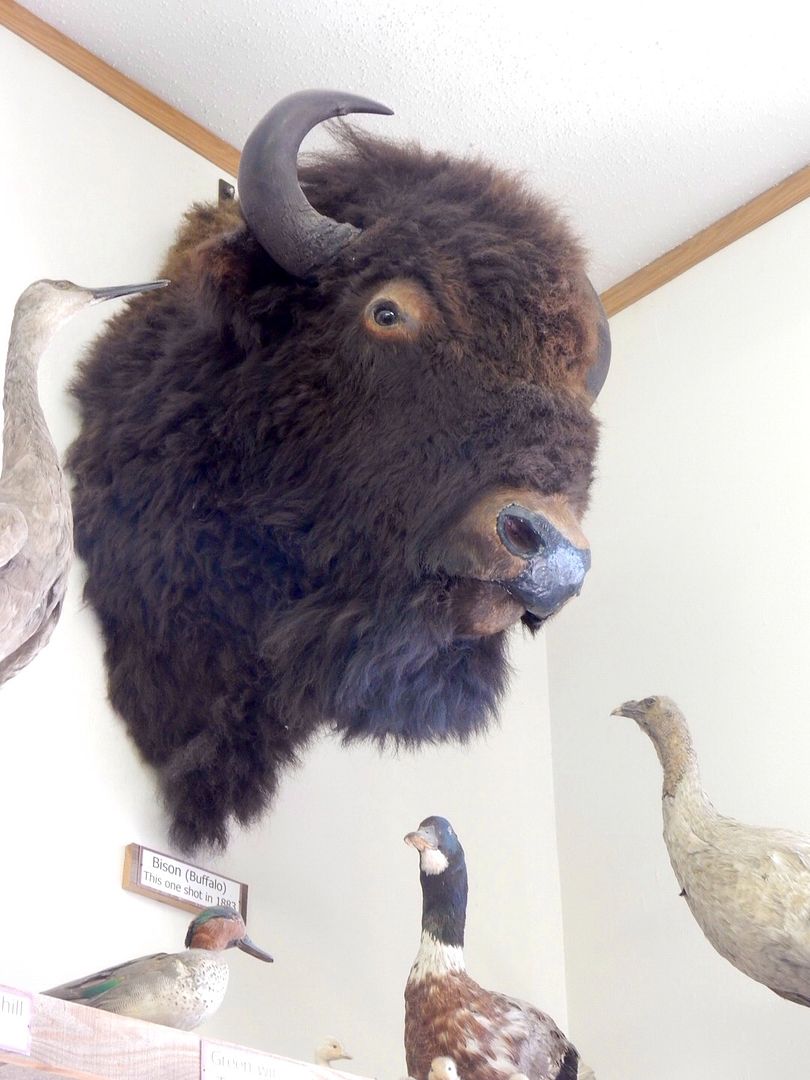Some general background:
- Custer is the oldest town established by European Americans in the Black Hills of South Dakota and Wyoming.
- The Black Hills were the historical territory of the Lakota Sioux and within the area designated when the Great Sioux Reservation was created in the Treaty of Fort Laramie in 1868.
- Gold was found here during the 1874 Black Hills Expedition, led by Lt. Colonel George Armstroing Custer, which initiated the Black Hills Gold Rush.
- In 1877, the US Government forced the Sioux to cede much of the land promised to them in the Fort Laramie treaty and opened the land for purchase and settlement.
- The town was originally named Stonewall (for Stonewall Jackson), but was subsequently changed to Custer.
These buffalo on are every corner along the Main Street of Custer. Each is painted by a different artist with unique images on each side. Here are a couple I found interesting (and beautiful!).
Liked this random piece of art in town.
First National Bank of Dakota Territory.
1881 Custer County Courthouse. The building was in use from 1881 to 1974. It has been collecting and displaying the county's history since. The bricks used to construct the building were kilned nearby. It was built in the Dakota Territory eight years before South Dakota became a state.
Different exhibits of the museum are featured in each room of the building. The Nature and American Indian room has antique taxidermy of a wide array of indigenous animals. Lakota Sioux cultural artifacts are also displayed.
Custer Expedition Room. Photo of rifle used by Custer to hunt antelope (pronghorns), his shoulder epaulets, and a first edition of his book, My Life on the Plains, Other artifacts and photos an be found in the room as well.
The Ranch Room featuring tools, barbed wire collection, antique saddles and tack.
Bear coat.
Buffalo coat and gloves.
School House room circa 1880.
The court room.
The location behind the courthouse of where the only legal hanging occurred (lynchings occurred elsewhere, however).
The General Store...ladies shoes.
Authentic Dakota Territory Stagecoach ... doesn't look too comfy.
Carriage house - Model T truck.
Housed in a hand-hewn log building is printing equipment from Custer's 1879 continuously operated newspaper. This is a Washington Hand Press used in 1890 that could turn out 300 impressions per hour.
Oldest building in the Black Hills ... known as the Flick Cabin. Built in 1875, it served as a residence and military headquarters. Today it is furnished as a pioneer cabin.
Admission to the museum was $6/adults; $5/seniors. Be sure to see all three floors of the courthouse as well as the artifacts out back and Flick House across the street.
Website: www.1881courthousemuseum.com





















No comments:
Post a Comment